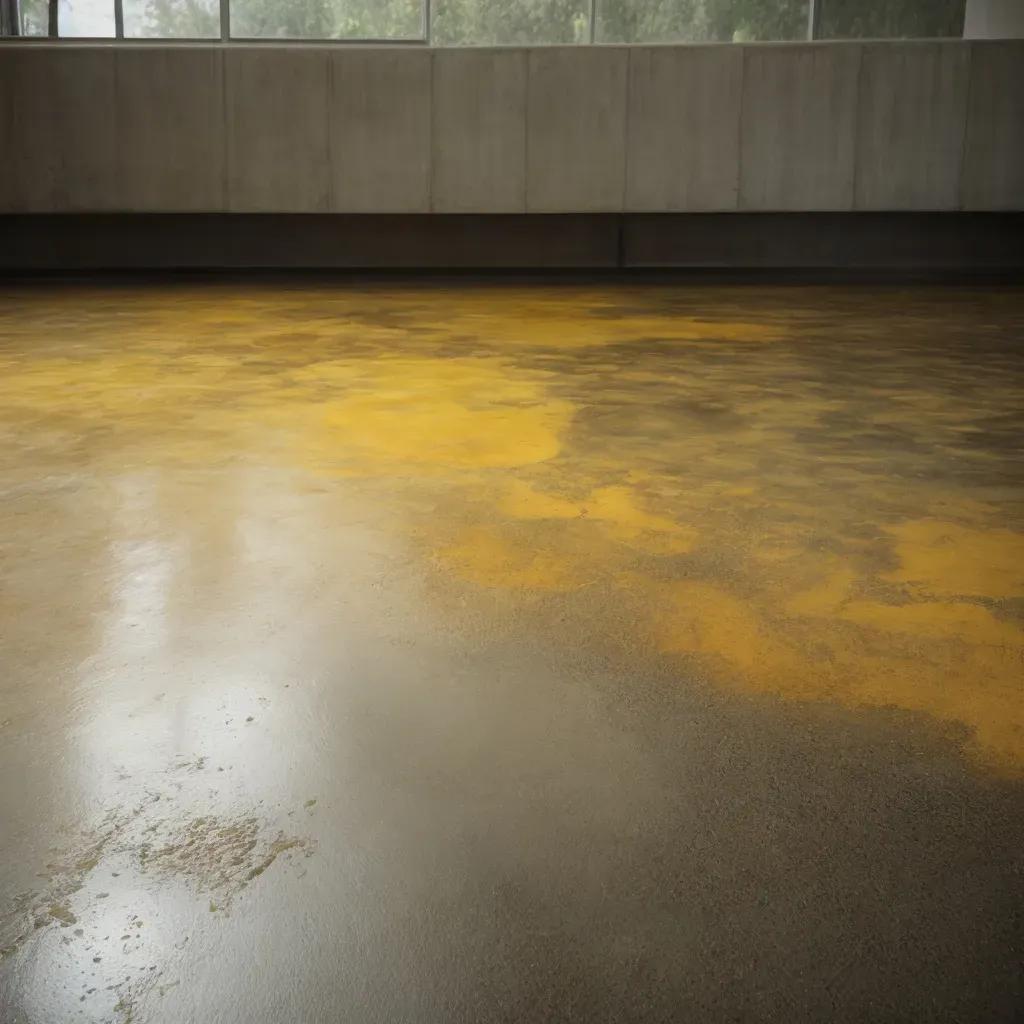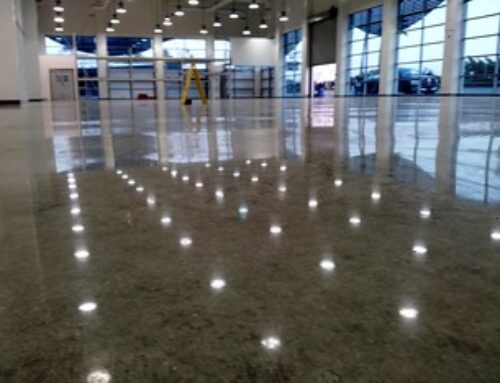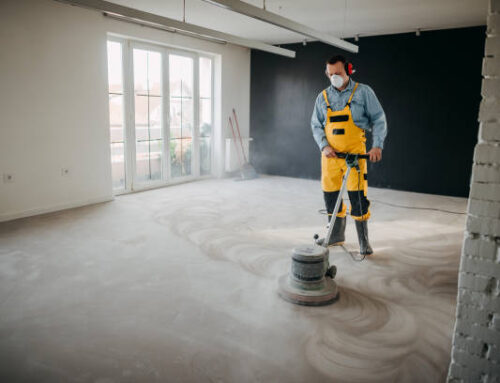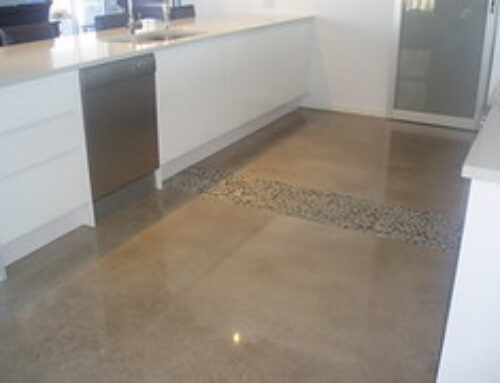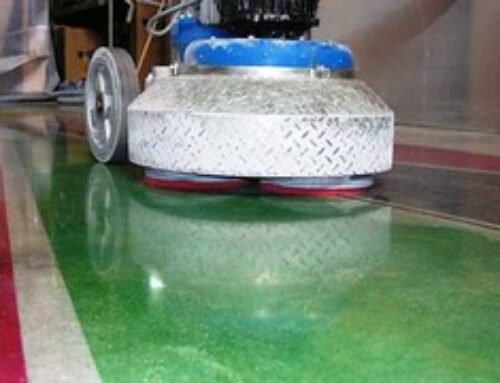Welcome to our guide on acid stains for concrete floors. We’ve got you covered with five essential tips to help you achieve stunning results.
From surface preparation to choosing the right stain and applying it correctly, we’ll guide you every step of the way.
Discover the importance of sealing and protecting your stained concrete, and learn how to maintain and care for your floors.
Let’s create a space where we all belong, starting with beautiful acid-stained floors.
Proper Surface Preparation
We recommend thoroughly cleaning and etching the concrete surface before applying the acid stain. This step is crucial as it ensures a smooth and even application, allowing the stain to penetrate deeply and create a vibrant, long-lasting color. By properly preparing the surface, you can achieve professional-looking results that will make your concrete floors stand out.
To begin the surface preparation process, gather the necessary tools and materials. You’ll need a high-quality concrete cleaner, a stiff brush, and an etching solution. Start by sweeping or vacuuming the floor to remove any loose debris. Then, follow the instructions on the cleaner to wash the surface thoroughly. Scrub the concrete using the stiff brush to remove any dirt, grease, or stains. Rinse the floor with clean water and allow it to dry completely.
Next, it’s time to etch the concrete. Etching is an important step as it opens up the pores of the concrete, allowing the acid stain to penetrate deeply. Mix the etching solution according to the manufacturer’s instructions and apply it to the floor. Use a brush or a broom to spread the solution evenly. Allow it to sit for the recommended amount of time, usually around 20-30 minutes, and then rinse it off with water. Make sure to remove all traces of the etching solution to prevent any interference with the acid stain.
Choosing the Right Acid Stain
When selecting the appropriate acid stain for our concrete floors, it’s important to consider various factors such as color preference, desired level of transparency, and compatibility with the concrete surface. Finding the right acid stain can enhance the overall aesthetic appeal of our floors and create a sense of belonging in our living spaces.
One of the first factors to consider is color preference. Acid stains come in a wide range of colors, from earthy tones like browns and greens to vibrant blues and reds. It’s important to choose a color that complements the existing decor and creates a cohesive look. By selecting a color that resonates with our personal style, we can create a space that truly feels like home.
Another important consideration is the desired level of transparency. Some acid stains create a translucent effect, allowing the natural variations and patterns in the concrete to show through. Others provide a more opaque finish, covering up imperfections and creating a uniform appearance. Deciding on the level of transparency we desire will help us achieve the look we want for our concrete floors.
Lastly, it’s crucial to ensure that the acid stain is compatible with the concrete surface. Not all acid stains work well with all types of concrete. It’s essential to choose a stain that’s specifically formulated for our type of concrete, whether it’s polished, stamped, or stained. This will ensure optimal results and prevent any unwanted reactions or damage to the surface.
Applying the Acid Stain Correctly
To ensure a successful application, proper technique and attention to detail are essential when applying an acid stain to concrete floors. We understand that you want your concrete floors to look their best, so we’re here to provide you with some tips on how to apply the acid stain correctly.
Firstly, it’s crucial to prepare the concrete surface before applying the stain. This involves cleaning the floor thoroughly and ensuring it’s free from any dirt, oil, or other contaminants. A clean surface will allow the acid stain to penetrate evenly and create a vibrant, long-lasting color.
Next, it’s important to test the acid stain on a small, inconspicuous area of the floor. This will help you determine the desired color intensity and ensure compatibility with the concrete. Remember, acid stains react differently to each concrete surface, so testing is crucial to achieve the desired results.
When applying the acid stain, make sure to use a sprayer or brush to evenly distribute the stain over the surface. Take care to avoid puddles or uneven application, as this can result in an inconsistent color. It’s also essential to follow the manufacturer’s instructions for the specific stain you’re using, as different products may have different application techniques.
After applying the stain, allow it to sit for the recommended amount of time. This will give the acid stain enough time to react with the concrete and develop its unique color. Once the desired color is achieved, neutralize the acid by rinsing the floor with a baking soda and water solution. This step is crucial to stop the staining process and prevent any further chemical reactions.
Sealing and Protecting the Stained Concrete
After applying the acid stain and allowing it to react with the concrete, our next step is to seal and protect the stained surface.
Sealing the stained concrete not only enhances the appearance but also provides long-lasting protection against wear and tear. It helps to prevent the stain from fading or discoloring over time, ensuring that your concrete floor remains vibrant and beautiful for years to come.
To seal the stained concrete, we recommend using a high-quality concrete sealer specifically designed for acid-stained surfaces. These sealers are formulated to penetrate the concrete and create a protective barrier that resists stains, moisture, and UV damage. They also enhance the color and sheen of the acid stain, giving your floor a polished and professional look.
Before applying the sealer, it’s important to thoroughly clean the stained surface to remove any dirt, dust, or debris. A simple solution of mild detergent and water can be used for this purpose.
Once the surface is clean and dry, apply the sealer using a brush, roller, or sprayer, following the manufacturer’s instructions. It is crucial to apply the sealer evenly and in thin coats to avoid streaks or bubbles. Multiple coats may be necessary, depending on the desired level of protection and the porosity of the concrete. Allow each coat to dry completely before applying the next.
After the final coat of sealer has dried, it’s essential to regularly maintain the stained concrete to ensure its longevity. This includes regular cleaning with a pH-neutral cleaner and avoiding the use of harsh chemicals or abrasive cleaning tools that could damage the sealer.
Maintenance and Care Tips for Acid-Stained Floors
Regular maintenance is essential for preserving the longevity and beauty of acid-stained floors. As proud owners of these stunning floors, we understand the importance of keeping them in top condition. By following a few simple care tips, we can ensure that our acid-stained floors remain a source of pride and joy for years to come.
To begin, regular sweeping or vacuuming is crucial in preventing dirt and debris from scratching the surface of the floor. This simple step helps maintain the smooth and polished look we love. Additionally, using a damp mop with a pH-neutral floor cleaner will effectively remove any stains or spills without damaging the acid-stained finish.
In order to protect the floors from potential damage, it’s recommended to place protective pads under furniture legs and avoid dragging heavy objects across the surface. By taking these precautions, we can prevent scratches and dents that may detract from the overall aesthetic appeal.
Another important aspect of maintenance is to avoid using harsh chemicals or abrasive cleaners on the acid-stained floors. These can strip away the protective sealant and compromise the integrity of the stain. Instead, opting for gentle, non-abrasive cleaning solutions will ensure the longevity of our floors.
Lastly, regular resealing of the acid-stained floors is necessary to maintain their durability and resistance to stains. Depending on the level of foot traffic, it’s generally recommended to reseal the floors every two to three years. This simple yet effective step will protect the floors from wear and tear, keeping them looking fresh and vibrant.

